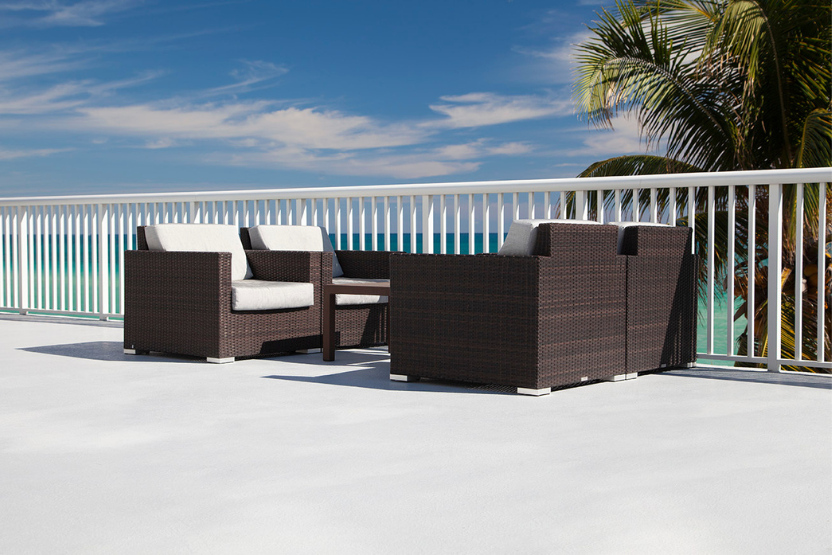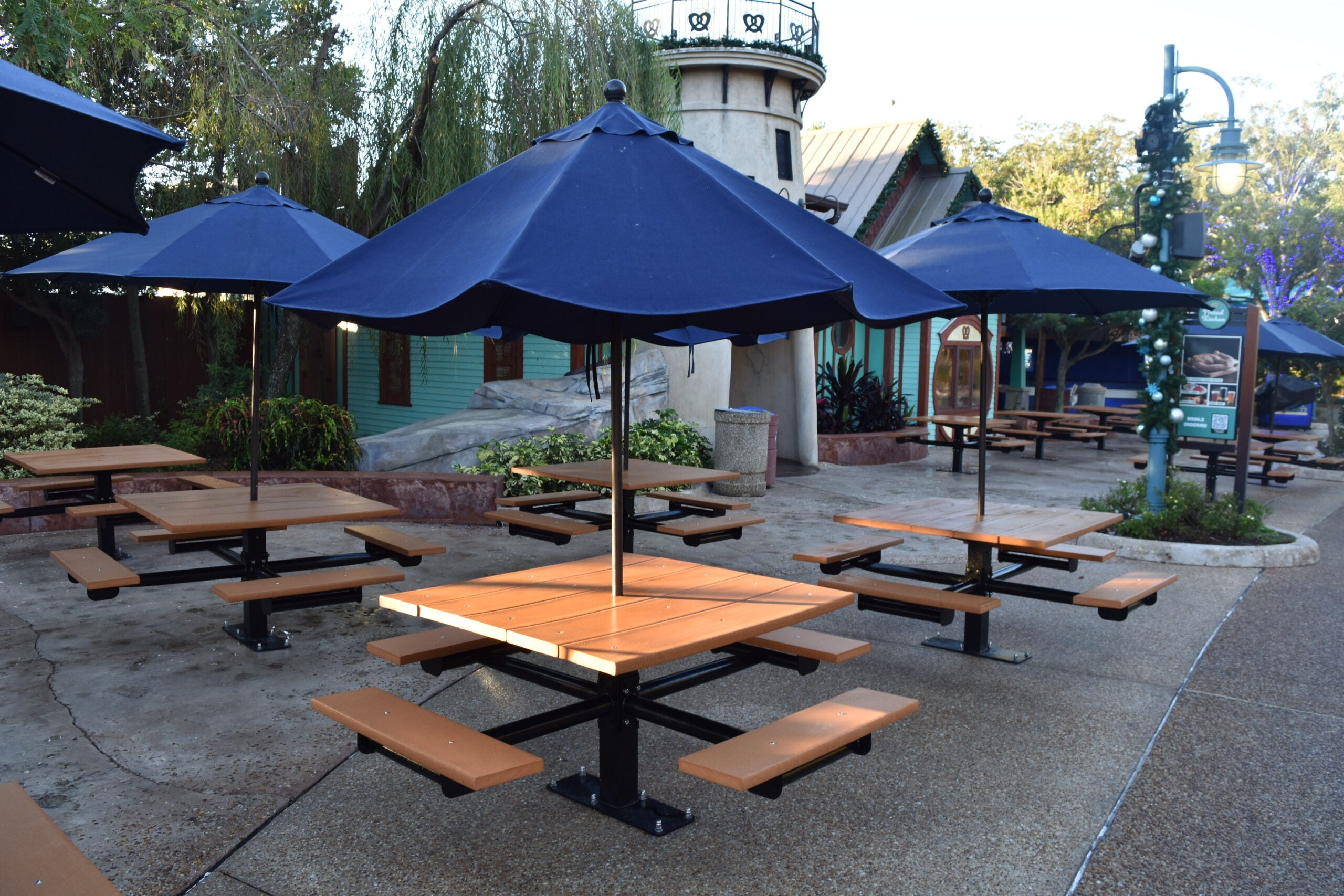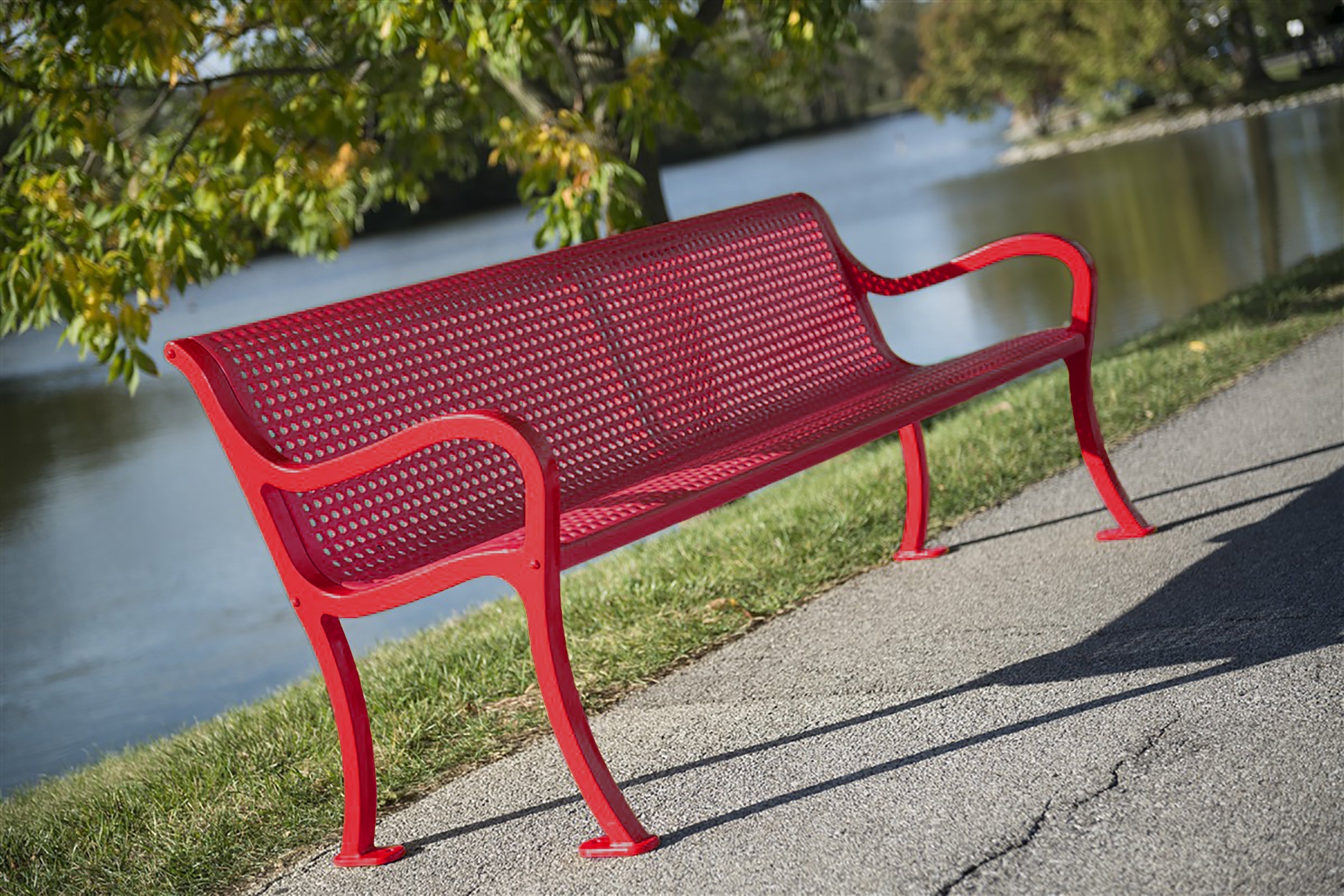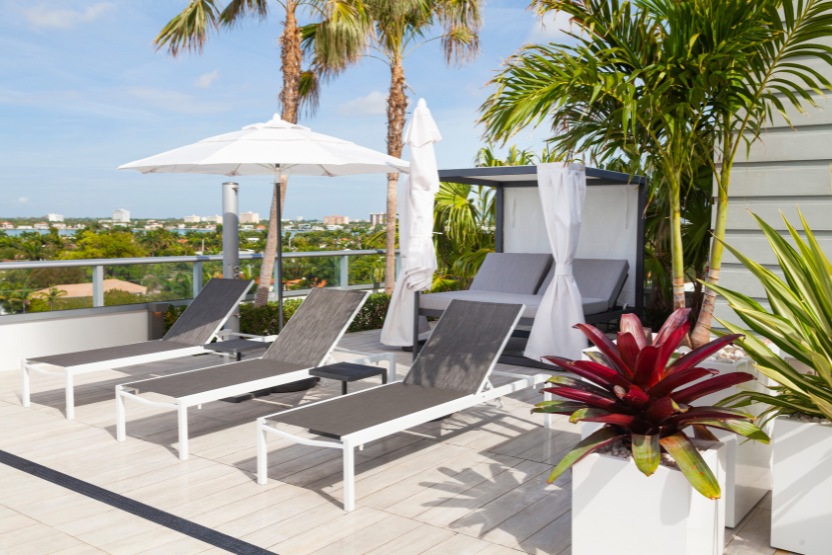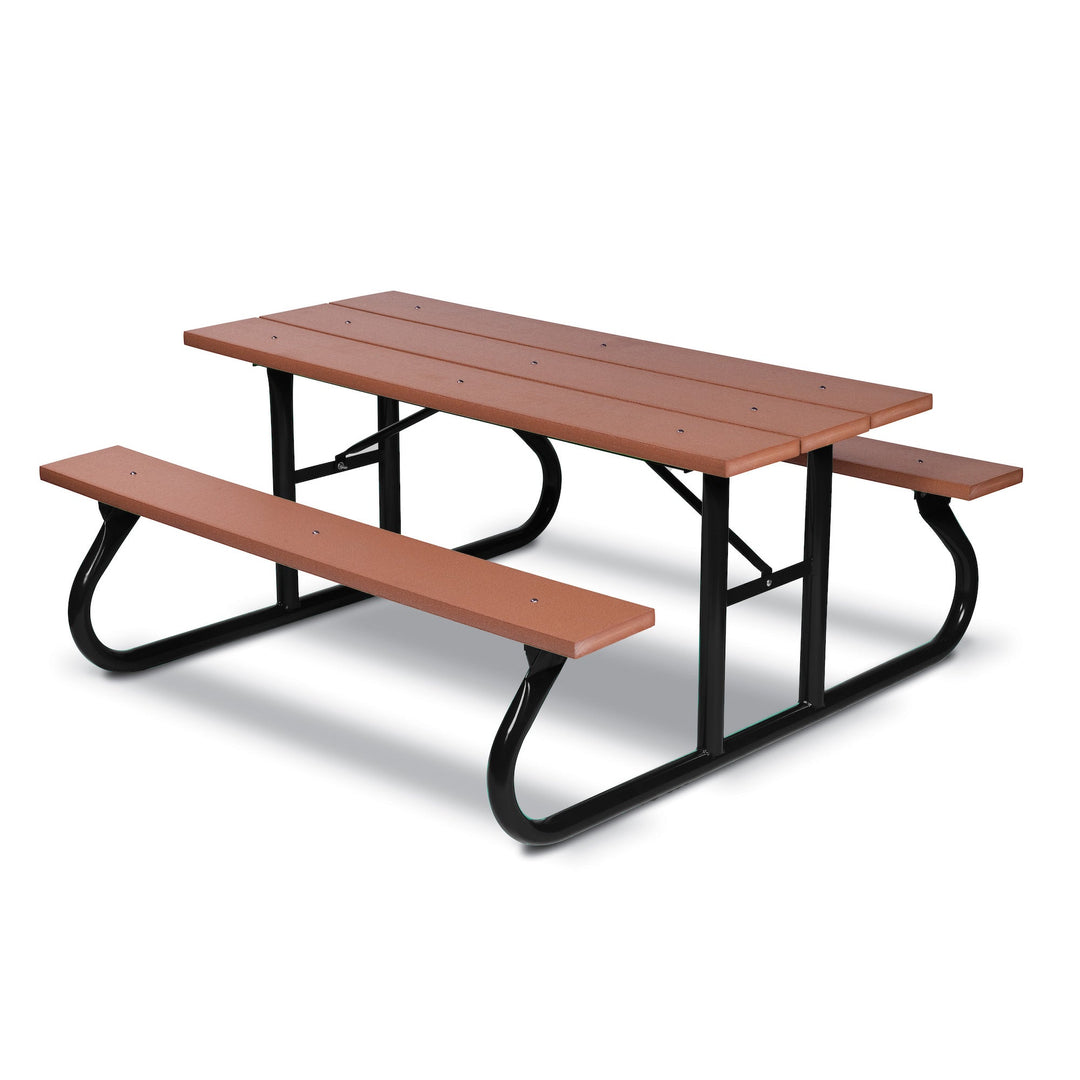Polyethylene vs. Plastisol Coated Outdoor Furniture
Commercial outdoor furniture needs to be tough. It has to withstand all weather types and endure near-constant use. To meet these requirements, furniture manufacturers can pair steel and plastic, two of the strongest and most durable materials.
Polyethylene and plastisol are two types of plastic coatings for outdoor steel furniture. Both are designed to protect the steel from corrosion and make it more comfortable to use. So, which one should you specify for your project—polyethylene or plastisol? A good comparison is based on real-world performance.
The Chemical Differences Between Polyethylene and Plastisol
We can’t truly understand the difference between polyethylene and plastisol until we know how each plastic coating is made.
Polyethylene is a polymer made from a simple chain of ethylene molecules.
-
It is a thermoplastic, meaning it melts when heated.
-
To make furniture, manufacturers heat the polyethylene and form it into shape.
-
Polyethylene feels smooth to the touch.
Plastisol is made from PVC molecules suspended in a liquid plasticizer.
-
It comes in a liquid or paste form.
-
When heated, the PVC absorbs the plasticizer, becoming rigid.
-
Cured plastisol feels smooth and slightly rubbery.
Polyethylene vs Plastisol for Outdoor Furniture: Comparison Table
Both polyethylene and plastisol have military roots. During WWII, plastisol was used as an alternative to natural rubber, while polyethylene was used as insulation in radar equipment. Since then, both materials have found other uses, including as coatings for commercial outdoor furniture.
|
|
Polyethylene (PE) |
Plastisol (PVC + plasticizer) |
|
Durability |
Polyethylene is durable as a standalone material, but may be less so when used as a coating for metal furniture. It is naturally non-stick and requires metal surface treatments to prevent peeling over time. |
Plastisol was invented as a coating for metal. It adheres to steel furniture extremely well and will not deteriorate over time. Weathering causes the plastisol to shrink slightly, further fusing it onto the metal. |
|
UV resistance |
Polyethylene is highly susceptible to UV damage, which causes it to fade, chalk, and crack over time. However, research suggests that PE performance can be improved with UV stabilizers. |
Plastisol is a more complex material than polyethylene. When the bonds between chlorine and carbon degrade, it causes a chain reaction that can accelerate decay. UV-stabilizers are a must for plastisol-coated furniture. |
|
Cleanability |
Polyethylene is smooth and non-porous, making it very easy to clean. |
Plastisol is easy to clean when new, but as it ages, it may retain dirt and require more frequent cleaning. |
|
Chemical safety |
Polyethylene is a simple polymer that can be used for food-safe packaging, making it well-suited for patio tables and other outdoor furniture. |
Plastisol contains plasticizers, which have been scrutinized previously. However, they do not pose a health risk when used in furniture. Even so, modern plastisol is now made with phthalate-free plasticizers. |
|
Temperature tolerance |
Highly temperature-resistant. Although polyethylene is a thermoplastic, it will not soften noticeably in the sun; it has a melting point of around 250°F. PE also performs well in cold climates. |
Plastisol has a glass transition temperature of around 14–50°F. In temperatures below 14°F, it will feel very stiff. It begins to soften at temperatures above 50°F. Plastisol is best for climates without extreme temperature swings. |
|
Appearance |
Polyethylene coatings make furniture surfaces look flat and hard. |
Plastisol gives outdoor furniture a soft-touch finish that looks and feels more premium. |
Misconceptions About Plastisol-Coated Furniture
Over the years, plastisol has gained a misguided reputation as an inferior and unsafe material for outdoor furniture. This is primarily based on outdated information.
● False: “Plastisol furniture contains toxic chemicals that can leach into your body.”
-
Truth: In the past, plasticizers contained phthalates, which can be absorbed through the skin. Modern plastisol formulations are phthalate-free.
● False: “Plastisol becomes brittle over time and starts to crack.”
-
Truth: Years of sunlight exposure will degrade any plastic—not just plastisol. To extend its lifespan, manufacturers add UV-stabilizers to the formulation.
● False: “The PVC in plastisol releases chlorine gas when exposed to the sun.
-
Truth: PVC only begins to break down at around 200°F. Even in high UV conditions, a park bench will not reach this temperature.
Final Verdict – Which Is Better?
Polyethylene and plastisol are both excellent materials for outdoor furniture. Almost all plastic-coated furniture these days is UV-resistant, so the choice comes down to aesthetics. Polyethylene is a classic hard plastic, and plastisol has a slightly softer finish. No matter which coating you choose, use material performance data to evaluate it—not marketing claims.
Wabash Valley is a proven leader in long-lasting, low-maintenance outdoor furnishings. Explore our premium range of plastisol-coated furniture here.
